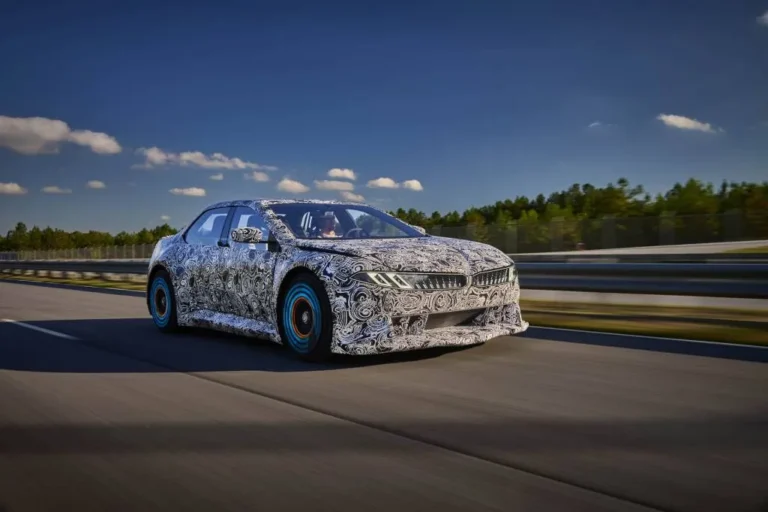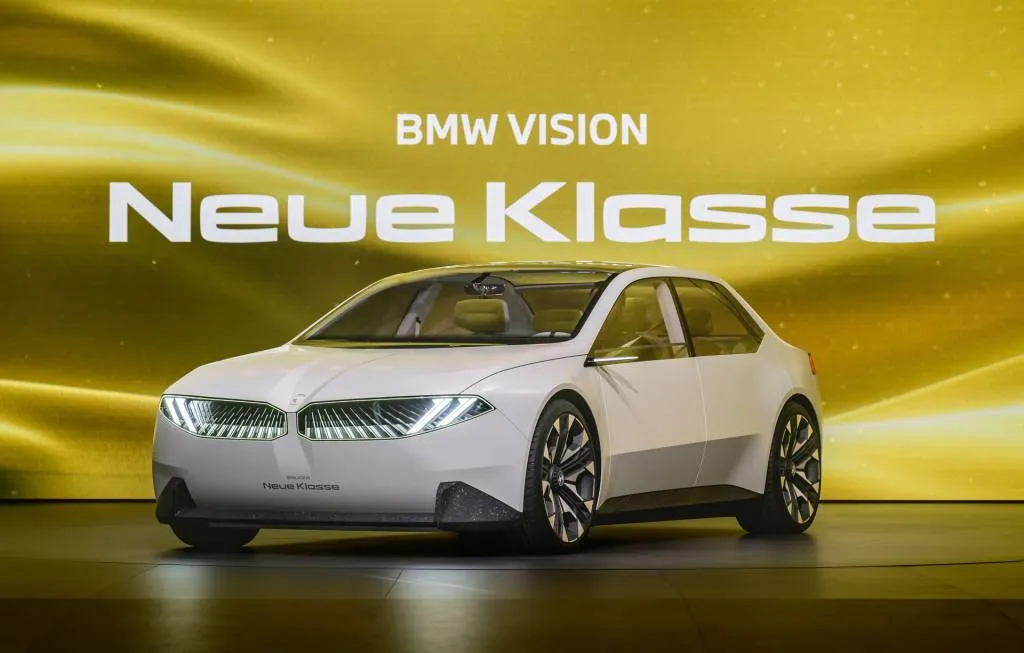- BMW’s Heart of Joy consists of four integrated control modules at the heart of every Neue Klasse EV
- The Dynamic Performance Control module integrates acceleration, braking, handling, and steering dynamics
- The systems were tested to the limits in BMW’s Vision Driving Experience, nicknamed “The Beast”
Pushing a vehicle to its limits is the essence of motorsport. Having a pro driver push you around a track in a test rig is the essence of awesome.
That’s what BMW had in mind at its Performance Center in Spartanburg, South Carolina, last November. The goal was to show off the capability of its new “Heart of Joy” powertrain control unit that will be the core of its Neue Klasse series of new electric cars launching this year and rolling out for the foreseeable future. BMW finally released some details on the Heart of Joy power system on Sunday.
In essence, this control module incorporates the motor systems, braking, charging, regenerative braking, and steering functions into one unified system. BMW says it processes inputs ten times faster than the disparate systems on its current line of EVs, and more responsively and smoothly handles accelerating, motor braking, steering, and vehicle dynamics.
It will be the core of four total control modules for the Neue Klasse EVs. Built at BMW’s plant in Debrecen, Hungary, the vanguard of this new class of BMWs with a dedicated EV platform will be an electric crossover believed to be the successor to the iX3 sold in Europe and China, then followed in 2026 by the i3 sedan similar in segment to the 3-Series.
Both models will have an M3 performance version that BMW foreshadowed with the Vision Driving Experience (VDX) test rig back in November. The engineers nicknamed it “The Beast.” If those Neue Klasse M3s embrace even a shade of what I experienced in November, then BMW’s electric future may be too bright for shades.

BMW’s Heart of Joy control unit
The test rig to prove this potential was a stripped down, camouflaged prototype core capable of seating four and being hammered by Jens Klingmann, the German racer with consecutive wins for BMW at the Italian GT Championship. Sized like a 3-Series but with the flexed proportions of a futuristic muscle car, the squat VDX had a massive rear spoiler and a protruding front splitter. It may mark the end of BMW’s polarizing design stretch: even in camo, the VDX was a stunner.
Flared wheel arches housed large 21-inch wheels with Michelin Pilot Sport 4S tires. Klingmann would smoke them, but not shred them, somehow. They were staggered, but since we had our phones and any other recording devices confiscated during the demo, I am unsure of the sizes. BMW won’t reveal any specs for the rig, either.
Except for one: an impossible 13,269 lb-ft of torque. In confirming that was torque at the wheels and not torque derived from what must have been a quad-motor setup in the VDX, BMW spokesperson Jay Hanson said it hasn’t been disclosed.
“That’s the amount of torque the Heart of Joy is tasked with managing,” Hanson added.
What am I sure of was the gut-dropping power, stunning grip, and high-speed stability of the VDX. During three progressively more intensive laps with Klingmann behind the wheel and three journalists harnessed into the other three seats, the VDX gave me this first impression: “There are no words.”
The stability was sublime. Drifting out of a carousel with the rear end sliding out in a dreamlike state, Klingmann thrust it forward in a straight line as if it had all been on a perfect line. Doing that at speed without slamming into us into the door panels was as surreal as a simulator. The sense of flat stability doubled in a series of three right-left sidewinding esses, through another curve, before a 90-degree turn out into the straight. Even the four-point harness was barely strained. Quick as a whip without the pain of a crack to 100 mph before the corkscrew up into the Spartanburg sky then 124 mph with the motors whirring like a mechanical hornets’ nest before the carousel. That was the top speed I noticed. It could have been higher.
Yes, pro drivers such as Klingmann prove how they are masters of machine and I am barely an apprentice, but BMW’s VDX test rig impressed me as much as Klingmann’s driving. It impressed him, too, but let’s keep in mind he gets paid by BMW.
“The VDX is playfully easy to drive and pushes the limits of driving physics to a new level,” he said in a statement released by his employer.

BMW’s Heart of Joy control unit
The VDX will not go into production. But the same Dynamic Performance Control module is one of four control units at the, umm, Heart of Joy in every new BMW EV. With software developed in-house, BMW says there’s virtually no delay in how the signals are processed and responded to, with latencies in “the millisecond range.” There are fewer control inputs, which BMW says results in more direct and consistent behavior.
Additionally, nearly all of the braking is handled by the motors, with friction brakes on reserve for emergency situations. BMW promises a smoot regen braking system due to the rapid processing power, but the company didn’t mention regen levels other than the B setting in use in today’s BMW EVs. Still, the Dynamic Performance Control module promises a 25% increase in efficiency, which should correspond to greater range.
BMW has disclosed nothing more on battery pack or motor sizes, though we know the Neue Klasse will have an 800-volt architecture for faster DC charge times. The other three control modules in the Heart of Joy handle semi-automated driving, infotainment, and basic comfort, climate, and vehicle access functions.
Expect more details on the production models at the heart of BMW’s new class of EVs in the second half of the year.



